Development of Secondary Education in India and Assam | MCQ |

Development of Secondary Education in India and Assam | MCQ |
MCQ
Here You will get all MCQ from chapter-1 based on Mudaliar Commission, Kothari Commission and National Education policy 1986 from chapter-1 Development of Secondary Education in India and Assam for Class-12.
Mudaliar Commission 1952-53
MCQ
1. In which year Secondary Education Commission was appointed under the chairmanship of Dr. Laksman Swami Mudaliar?
A. 1953
B. 1962
C. 1952
D. 1951
Ans: Option C). 1952
2. Who was the chairmanship of Secondary Education Commission 1952-53?
A. S. Radhakrishnan
B. B. R. Ambedkar
C. D.S. Kothari
D. Dr. A. L. Mudaliar
Ans: Option d). Dr. A. L. Mudaliar
3. No nation can progress in the absence of-
A. Social progress
B. Political progress
C. Economic progress
D. Technical progress
Ans: Option: C). Economic progress.
4. Which Commission suggested ‘Education for Leadership” as an aim of Secondary Education.
A. Kothari
B. Mudaliar
C. Sadlar
D. University Education Commission
Ans: Option B). Mudaliar
5. Which Commission recognised that the school should maintain and develop the qualities like- values of discipline, tolerance, patriotism, cooperation, equality of thought, speech and writing in the students.
A. National Education Policy
B. Secondary Education Commission
C. Sadlar Commission
D. Kothari Commission
Ans: Option B). Secondary Education Commission.
6. The Secondary Education Commission presented a report on-
A. 23rd September, 1952
B. 29th August, 1953
C. 29th August, 1952
D. 29th June, 1966
Ans: Option B). 29th August, 1953
7. The Secondary Education Commission presented a report on 29th August, 1953 running in-
A. 215 pages
B. 250 pages
C. 280 pages
D. 350 pages
Ans: Option B). 250 pages.
8. The Secondary Education Commission was appointed by-
A. University Grants Commission
B. Planning Commission
C. Ministry of Education, Government of India
D. Ministry of Home Affairs
Ans: Option C). Ministry of Education, Government of India.
9. The main objective of the Secondary Education Commission was to-
A. Review Primary Education
B. Reform Secondary Education
C. Reform University Education
D. Expand Vocational Training
Ans: Option B). Reform Secondary Education.
10. Which Commission recommended the pattern of education system-
A. 10+2+3
B. 10+2
C. 5+3+3+4
D. 7+3+2
Ans: Option B) 10+2
11. Mudaliar Commission emphasized the need for-
A. Moral education
B. Compulsory Military education
C. Work-experience and Vocational training
D. English Medium Education
Ans: Option C) Work-experience and vocational training.
12. According to Secondary Education Commission, the duration of secondary education should be-
A. 4 years
B. 5 years
C. 6 years
D. 7 years
Ans: Option C). 6 years
13. The Secondary Education Commission recommended a diversified curriculum at-
A. Primary stage
B. Secondary stage
C. University stage
D. All of the above
Ans: Option B) Secondary stage
14. Which of the following was not a recommendation of Secondary Education Commission-
A. Establishment of multipurpose schools
B. Education for leadership
C. Education for vocational efficiency
D. Abolition of examinations
Ans: Option D) Abolition of examinations.
15. When was the report of the Secondary Education Commission submitted?
A. 1963
B. 1950
C. 1953
D. 1952
Ans: Option C) 1953
16. Which aspect of education did the commission emphasize most?
A. Literary education
B. Scientific temper
C. Character building and citizenship
D. Physical education only
Ans: Option C). Character building and citizenship.
17. How many years of secondary education were proposed by the Secondary Education Commission?
A. 4 years
B. 5 years
C. 6 years
D. 7 years
Ans: Option C). 6 years
18. Which language policy did the Secondary Education Commission recommended?
A. Hindi only
B. English only
C. Two—language formula
D. Three – language formula
Ans: Option D). Three – language formula
19. Which type of school did the Secondary Education Commission promote for better administration and quality?
A. Private schools only
B. Multipurpose schools
C. Residential schools
D. Madrassas
Ans: Option B) Multipurpose schools
20. Which type of education was emphasized by the Secondary Education Commission?
A. Classical education
B. Vocational and diversified education
C. Religion education
D. Military training
Ans: Option B). Vocational and diversified education.
21. The Mudaliar Commission stressed on the development of-
A. Technical
B. Physical
C. Harmonious personality
D. Religious
Ans: Option C). Harmonious personality.
22. How many years of school education mention in the Mudaliar Commission?
A. 6
B. 8
C. 10
D. 12
Ans: Option d). 12
23. Which commission is known for its recommendation on the improvement of Secondary Education in India?
A. Radhakrishnan Commission
B. Kothari Commission
C. Mudaliar Commission
D. National Policy of Education 1986
Ans: Option C. Mudaliar commission
Kothai Commission 1964-66
MCQ
1. Which commission recommended that the strengthening of social and national integration as one of the main goals of education?
A. Secondary Education Commission
B. National Education Policy
C. National Education Commission
D. National Education Policy 1986
Ans: Option C. National Education Commission
2. ‘Delinking Degree from job’ – This aspect was recommended by-
A. Sadlar Commission
B. Kothari Commission
C. Mudaliar Commission
D. National Education Policy
Ans: Option B. Kothari Commission
3. Which commission recommended 10+2+3 formula for the development of Indian Education?
A. New Education Policy 2020
B. National Education Policy 1986
C. National Education Commission
D. Secondary Education Commission
Ans: Option C. National Education Commission.
4. In which year was the Kothari Commission appointed?
A. 1952
B. 1964
C. 1968
D. 1986
Ans: Option B. 1964
5. The Kothari Commission gave recommendation for which levels of education?
A. Primary level
B. Secondary level
C. Higher/University level
D. All levels of education
Ans: Option D. All levels of education
6. When was the Kothari Commission established?
A. 1962
B. 1964
C. 1966
D. 1968
Ans: Option B. 1964
7. The main objective of the Kothari Commission was to-
A. Improve agricultural education
B. Suggest reforms in the Indian Political system
C. Examine and suggest improvement for the Indian Education System
D. Establish more universities in India.
Ans: Option C. Examine and suggest improvement for the Indian Education System.
8. Which of the following was a major recommendation of the Kothari commission?
A. Abolition of exams
B. Use of English as the only medium of instruction
C. Common School System
D. Privatization of Higher Education
Ans: Option C. Common School System.
9. The Kothari Commission is also known as-
A. National Policy of Education
B. Indian Education Commission
C. University Grants Commission
D. Secondary Education Commission
Ans: Option B. Indian Education Commission.
10. What was the main aim of the Kothari Commission?
A. Reform of the Medical Education
B. To review the status of science and technology
C. To formulate a general pattern of education
D. Promote Sanskrit Education
Ans: Option C. To formulate a general pattern of education.
11. Which principle was emphasised by the Kothari Commission?
A. Centralization of Education
B. Commercialization of Education
C. Equalization of Educational Opportunity
D. Privatization of Education
Ans: Option C. Equalization of Education.
12. The report of the Kothari Commission led to the formulation of which National Education Policy?
A. National Education Policy, 1968
B. National Education Policy, 1986
C. National Education Policy, 2005
D. National Education Policy, 2020
Ans: Option A. National Education Policy, 1968.
13. Which Commission suggested the continuing education at all levels of Education?
A. Secondary Education Commission 1952-53
B. National Education Commission 1964-66
C. National Education Policy, 1968
D. National Education Policy, 1986
Ans: Option B. National Education Commission 1964-66.
14. Which of the following Commission/ Committee in the Post-Independence India has paid attention to all the levels of Education?
A. Radhakrishnan Commission
B. Mudaliar Commission
C. Kothari Commission
D. Sri Prakash Committee.
Ans: Option C. Kothari Commission
15. The ‘Three Language Formula’ for language education in India was recommended by:
A. Mudaliar Commission
B. Kothari Commission
C. Sri Prakash Committee.
D. National Education Policy, 1986
Ans: Option B. Kothari Commission
16. The Kothari Commission 1964-66 recommended on-
A. Only general education
B. A National Policy on Education
C. Only Vocational Education
D. Only Higher Education
Ans: Option b. A National Policy on Education
17. According to National Education Commission 1064-66 the language should be used in primary education for a better understanding of students is-
A. English language
B. Regional language
C. Mother tongue
D. Official language
Ans: Option C. Mother tongue
18. how many members were there in the Kothari Commission 1964-66?
A. 15
B. 17
C. 21
D. 25
Ans: Option B. 17
19. The main objective of Kothari Commission was to-
A. Promote vocational training
B. Measures for Women Education
C. Review of the functioning universities
D. Formulate a National Policy on Education
Ans: Option D. Formulate a National Policy on Education
20. The Kothari Commission was appointed during the tenure of which Prime Minister?
A. Jawaharlal Nehru
B. Lal Bahadur Shastri
C. Indira Gandhi
D. Rajiv Gandhi
Ans: Option B. Lal Bahadur Shastri
21. The Kothari Commission emphasised the need for-
A. Religious education
B. Rote learning
C. Vocationalization of education
D. Reduction of school years
Ans: Option C. Vocationalization of education.
22. The Kothari Commission was the first to recommended for-
A. Exclusive technical universities
B. Free higher education
C. Privatization of education
D. Common school system
Ans: Option D. Common school system.
National Education Policy 1986
MCQ
1. In which year was the first National Education Policy was introduced?
A. 1986
B. 1964
C. 1968
D. 1989
Ans: Option C. 1968
2. When was the National Education Policy introduced?
A. 1968
B. 1986
C. 1964
D. 1962
Ans: Option B. 1986
3. Who was the Prime Minister of India when National Education Policy 1986 was launched?
A. Indira Gandhi
B. Rajiv Gandhi
C. Atal Bihari Vajpayee
D. V. Narasimha Rao
Ans: Option B. Rajiv Gandhi
4. The National Education Policy (NEP) 1986 emphasised on-
A. Privatisation of Education
B. Only Primary Education
C. Education for all
D. Only technical education
Ans: Option C. Education for all
5. NEP 1986 special emphasis to the education of which group?
A. Foreign students
B. Youths only
C. Elderly
D. Women and marginalized groups
Ans: Option D. Women and marginalized groups
6. The NEP 1986 was modified in the year of-
A. 1988
B. 1990
C. 1992
D. 1994
Ans: Option C. 1992
7. Operational Blackboard was associated with which of the following policy?
A. NEP 1968
B. NEP 1986
C. NEP 2020
D. Fifth Five Year Plan
Ans: Option B. NEP 1986
8. The primary goal of Operation Blackboard was-
A. Distribution for textbooks
B. Establishing the principle of accountability to given objectives and norms
C. Train teachers in foreign language
D. To provide minimum facilities to a primary school.
Ans: Option D. To provide minimum facilities to a primary school.
9. Which programme was launched under NEP 1986 for Universalization of Primary Education?
A. Sarva Shiksha Abhiyan
B. District Primary Education Programme
C. Operation Blackboard
D. Mid-Day-Meal Scheme
Ans: Option C. Operation Blackboard
10. NEP 1986 gave special emphasis to the education of which group?
A. Urban children
B. Minorities only
C. Women and backward classes
D. Foreign students
Ans: Option C. Women and backward classes
11. The NEP 1986 laid stress on which system of education?
A. 5+3+3+4
B. 10+2+3
C. 10+2
D. 7+3+2
Ans: Option B. 10+2+3
12. The New Education Policy 2020 laid stress on which of the following pattern of education?
A. 5+3+3+4
B. 10+2+3
C. 10+2
D. 7+3+2
Ans: Option A. 5+3+3+4
13. According to NEP 1986, the minimum qualification for a primary teacher should be-
A. Class 10th pass
B. Graduate with B. Ed
C. Higher Secondary with a teacher training certificate
D. Post graduate in any subject
Ans: Option C. Higher Secondary with a teacher training certificate.
14. A Status Paper ‘Challenge of Education’ – A policy perspective is related to ________ Commission.
A. Mudaliar Commission
B. National Education Policy 1986
C. University Education Commission 1948-49
D. National Education Commission
Ans: Option D. National Education Policy 1986.
15. Which organization was the responsible for the implementation of NEP, 1986?
A. CBSE
B. UGC
C. NCERT
D. Ministry of Education
Ans: Option D. Ministry of Education
16. Which policy replaced the NEP 1986?
A. NEP 2005
B. NEP 1968
C. NEP 1986
D. NEP 2020
Ans: Option D. NEP 2020
Related Post Just Click Here: Chapter-1 Development of Secondary Education in India and Assam notes.
Calendar of Content List:
| M | T | W | T | F | S | S |
|---|---|---|---|---|---|---|
| 1 | 2 | |||||
| 3 | 4 | 5 | 6 | 7 | 8 | 9 |
| 10 | 11 | 12 | 13 | 14 | 15 | 16 |
| 17 | 18 | 19 | 20 | 21 | 22 | 23 |
| 24 | 25 | 26 | 27 | 28 | 29 | 30 |

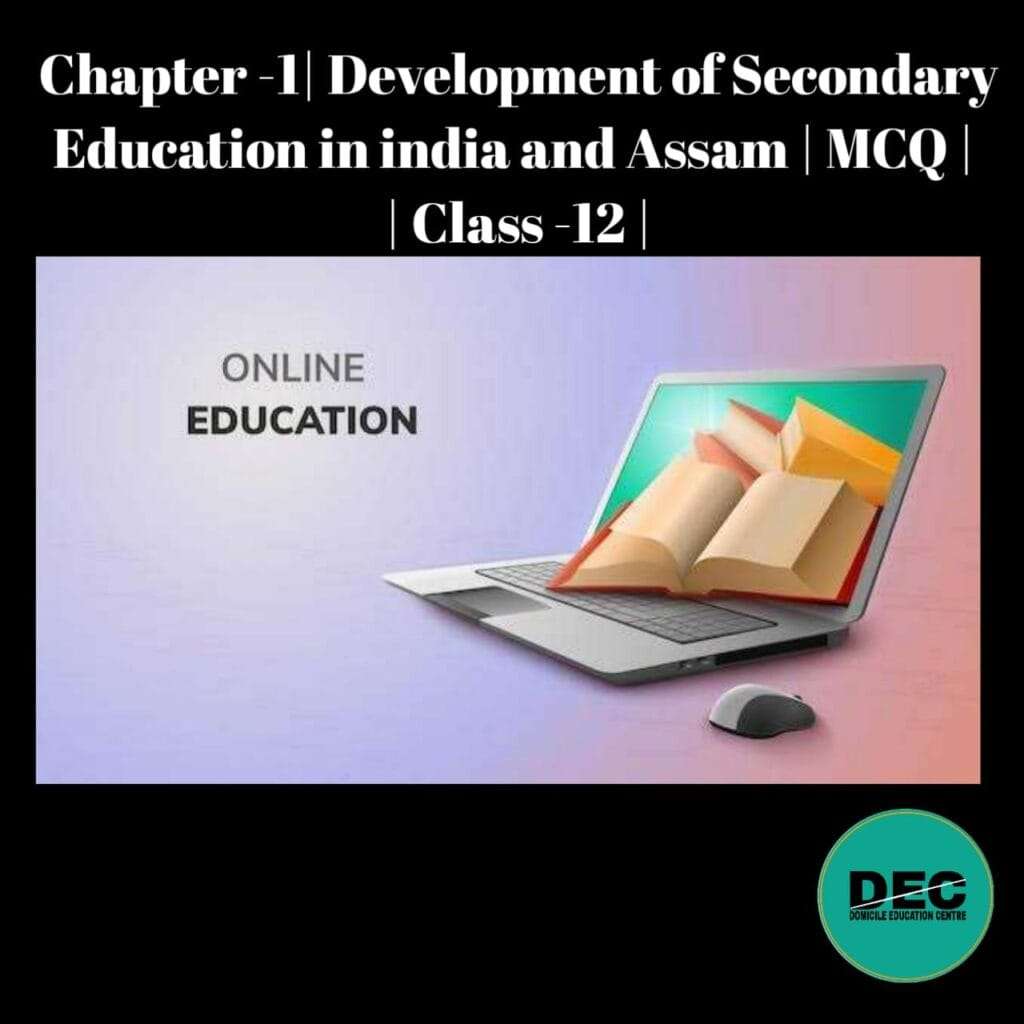


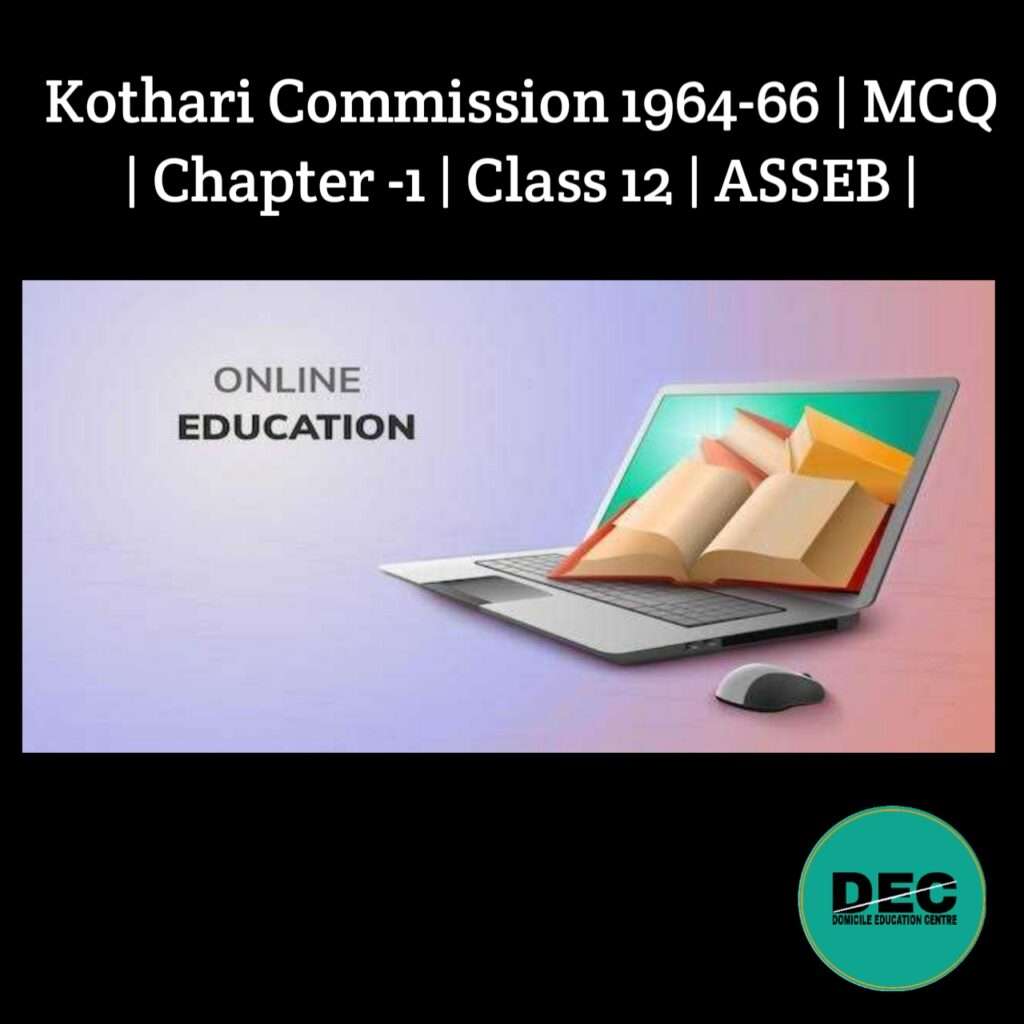



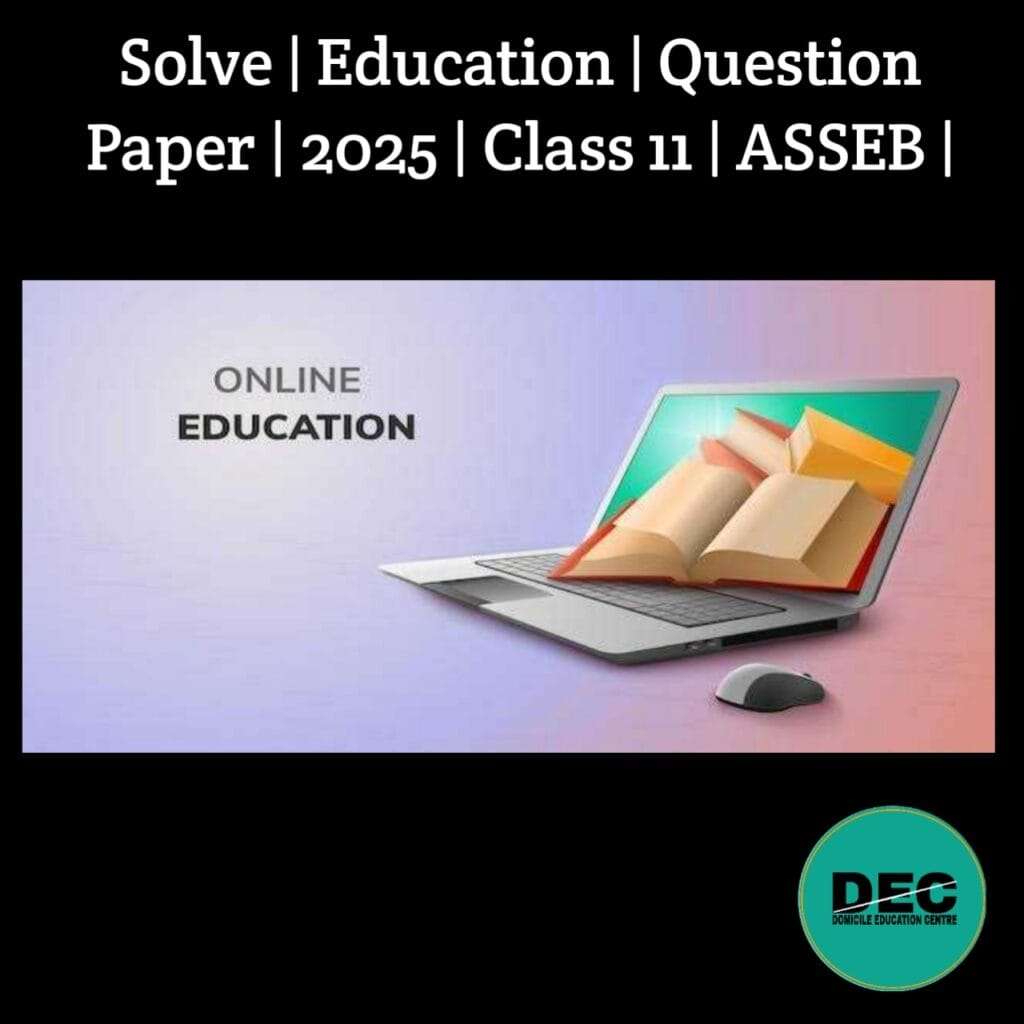
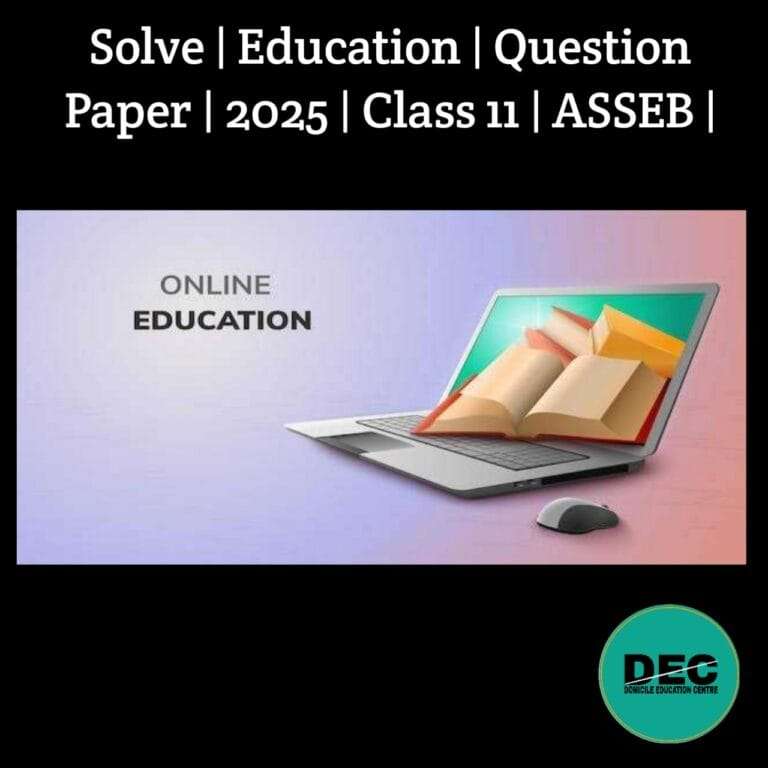
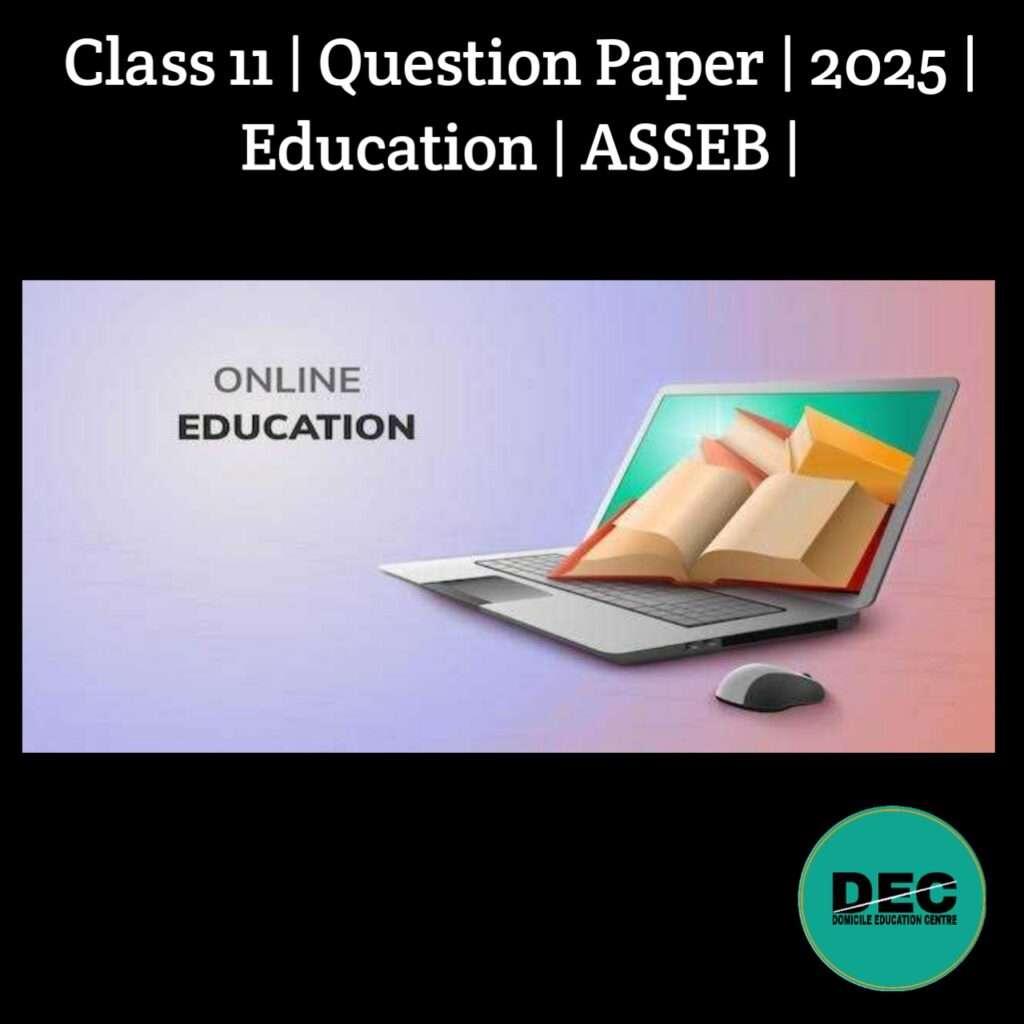
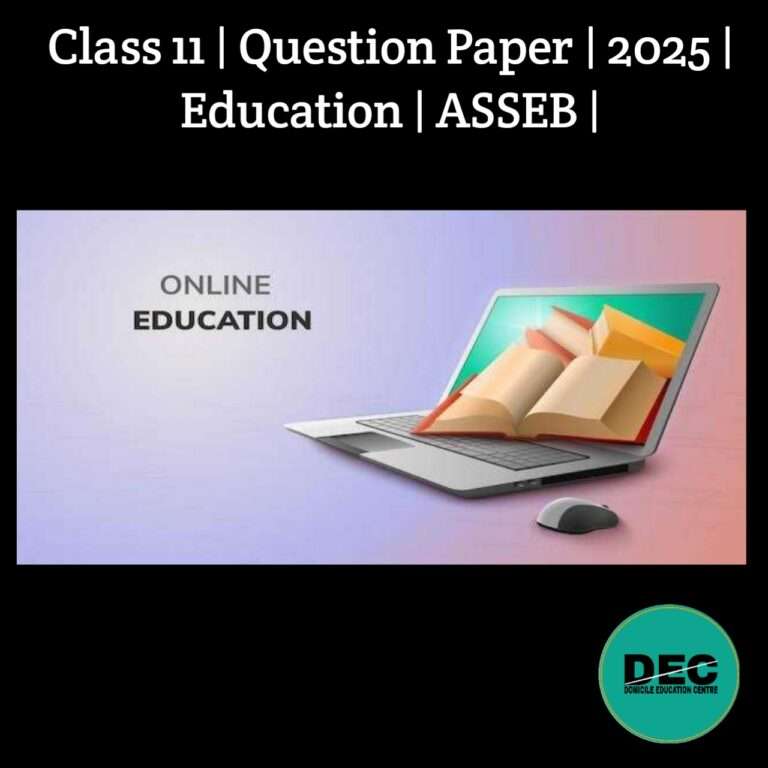

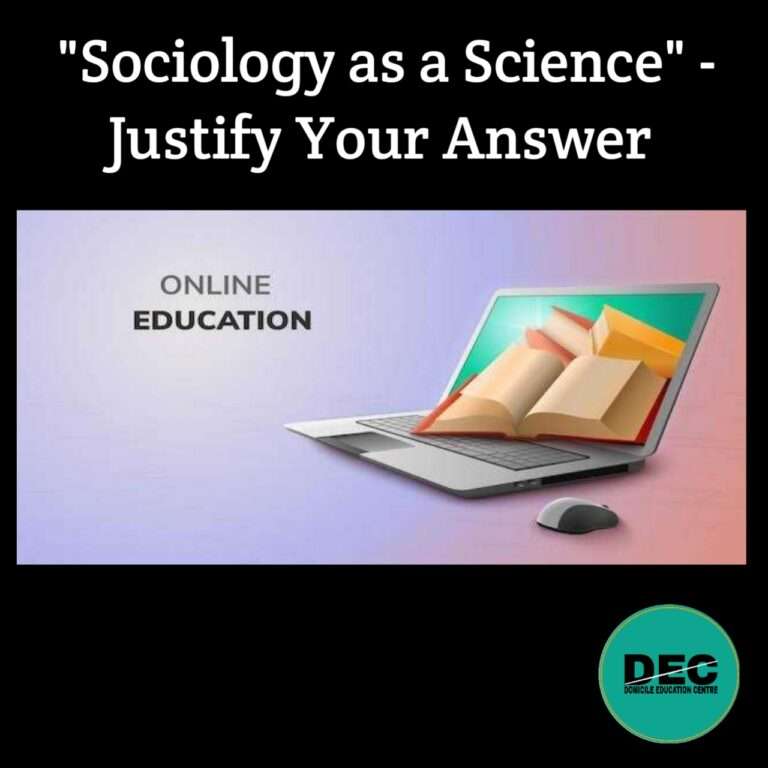


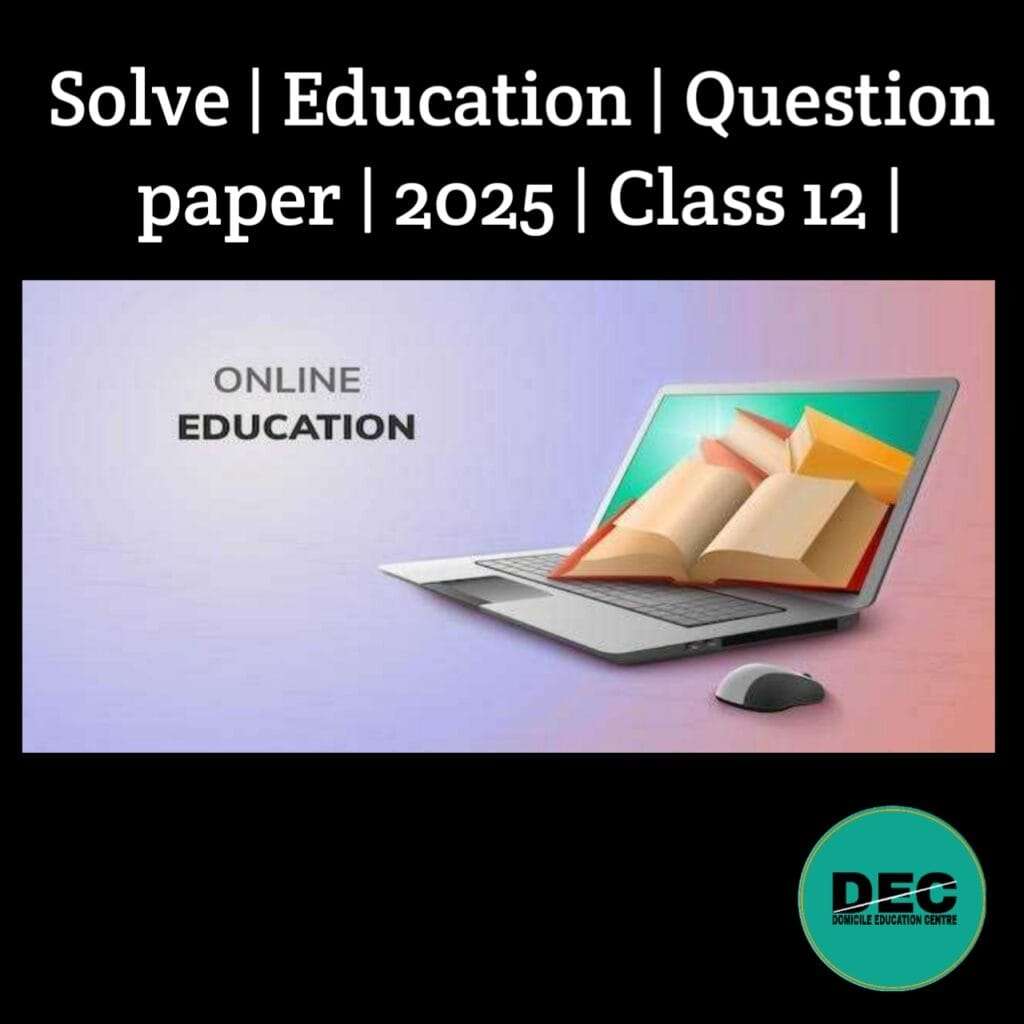
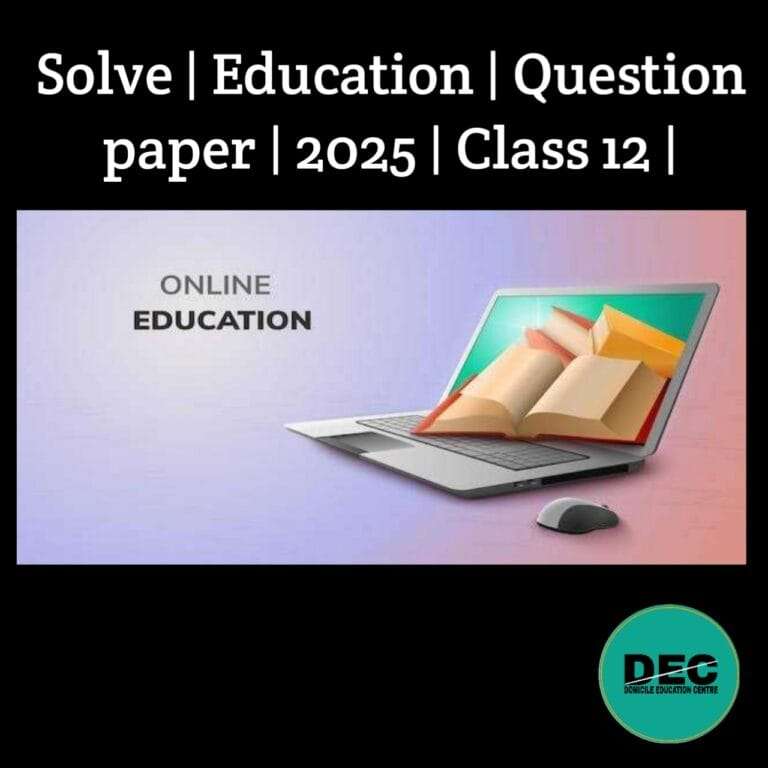
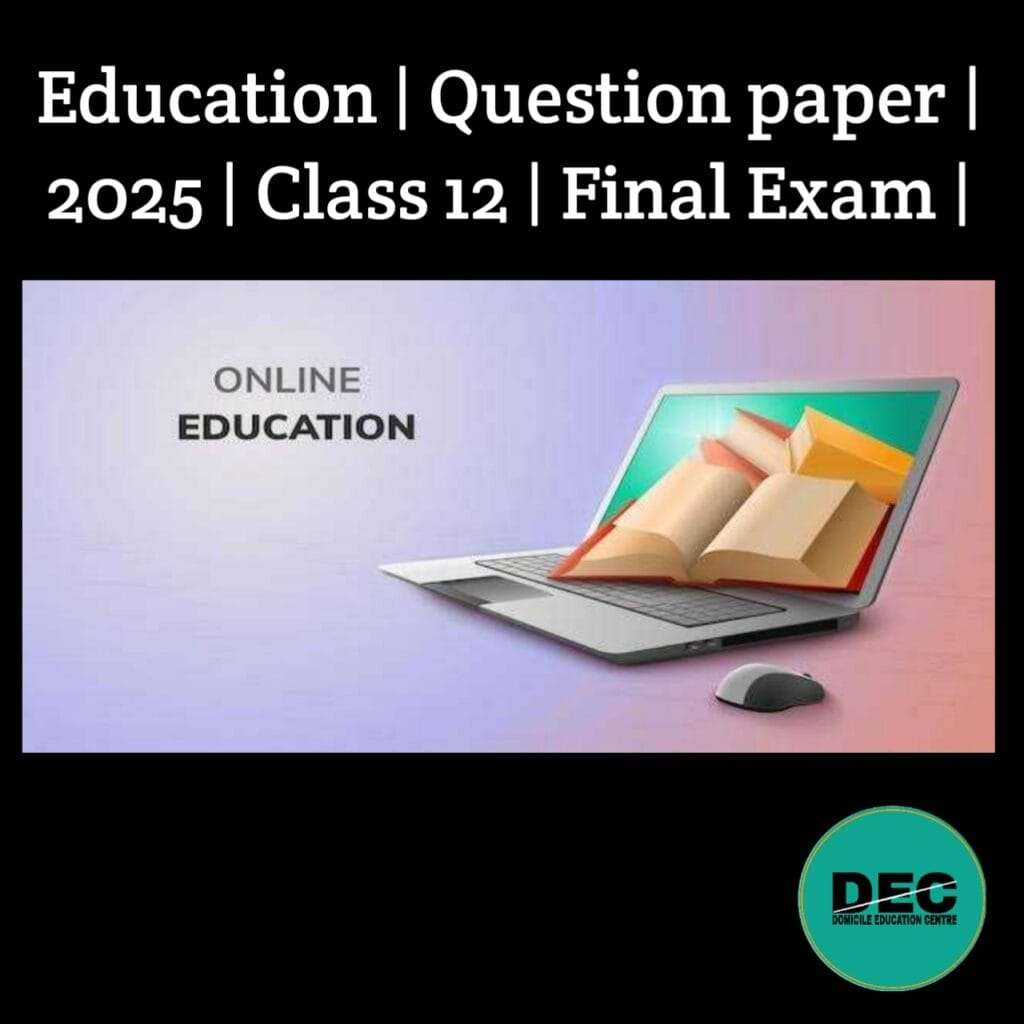

Recent Comments